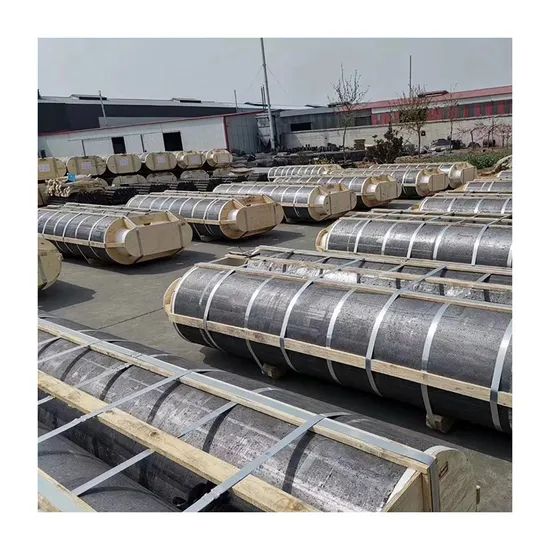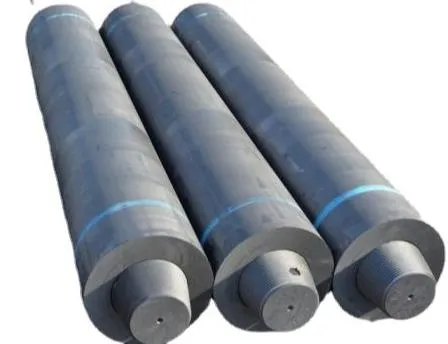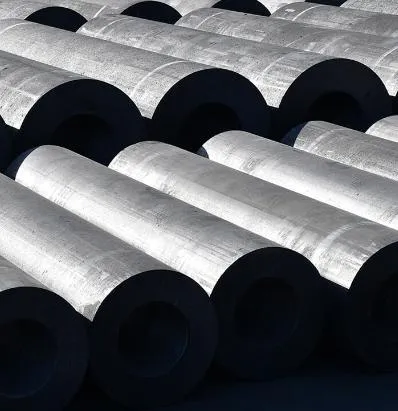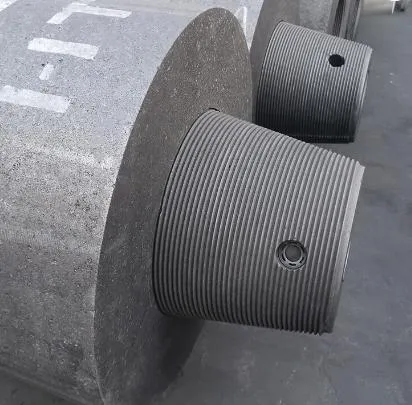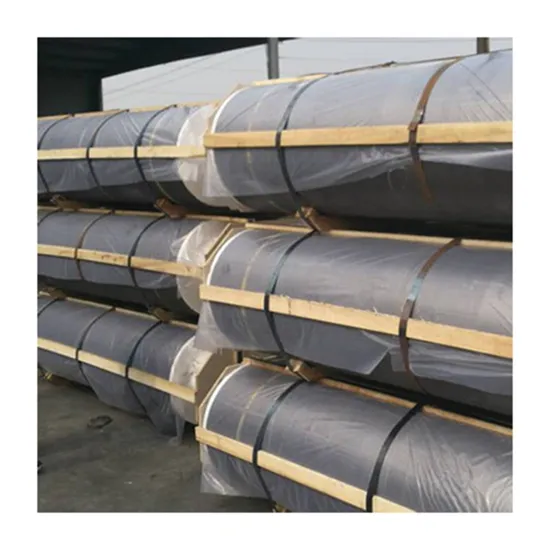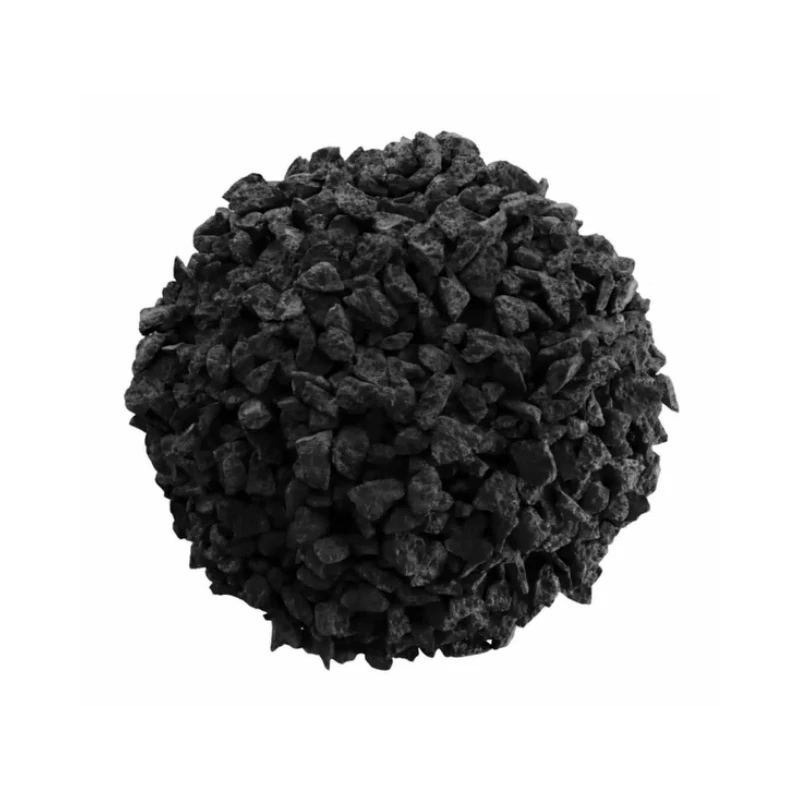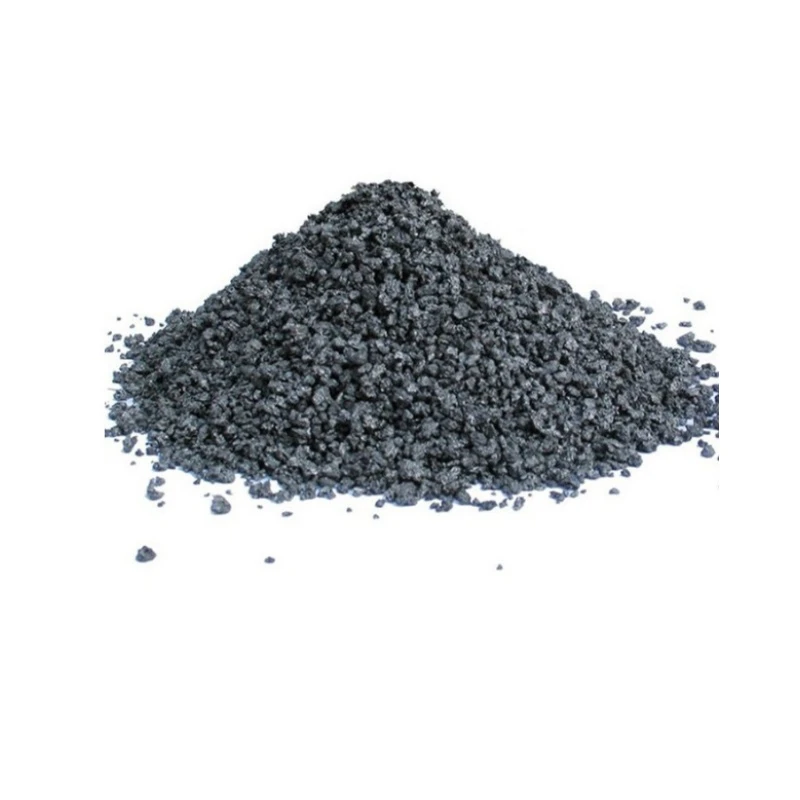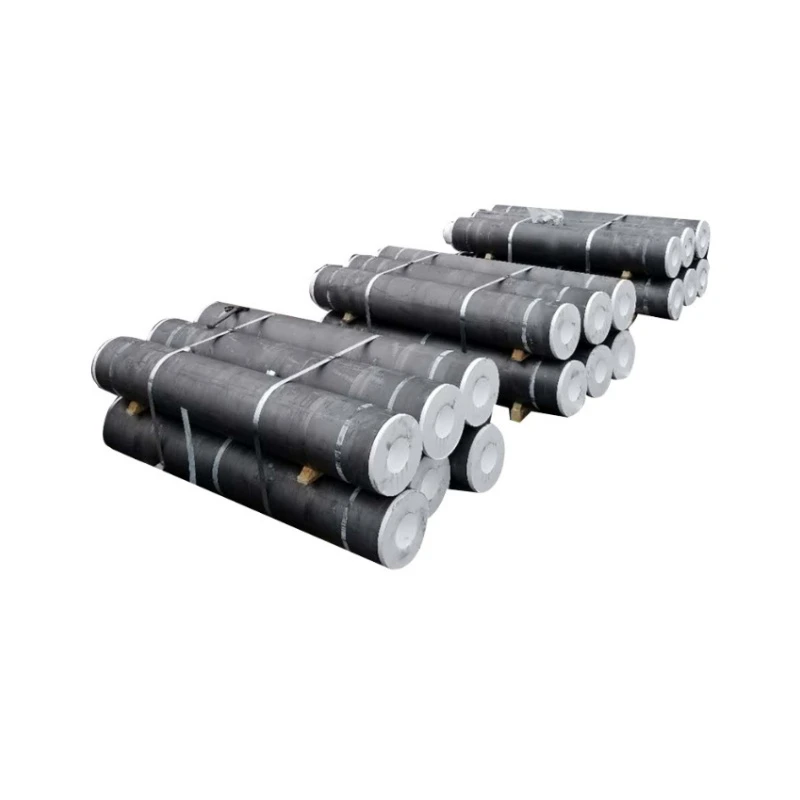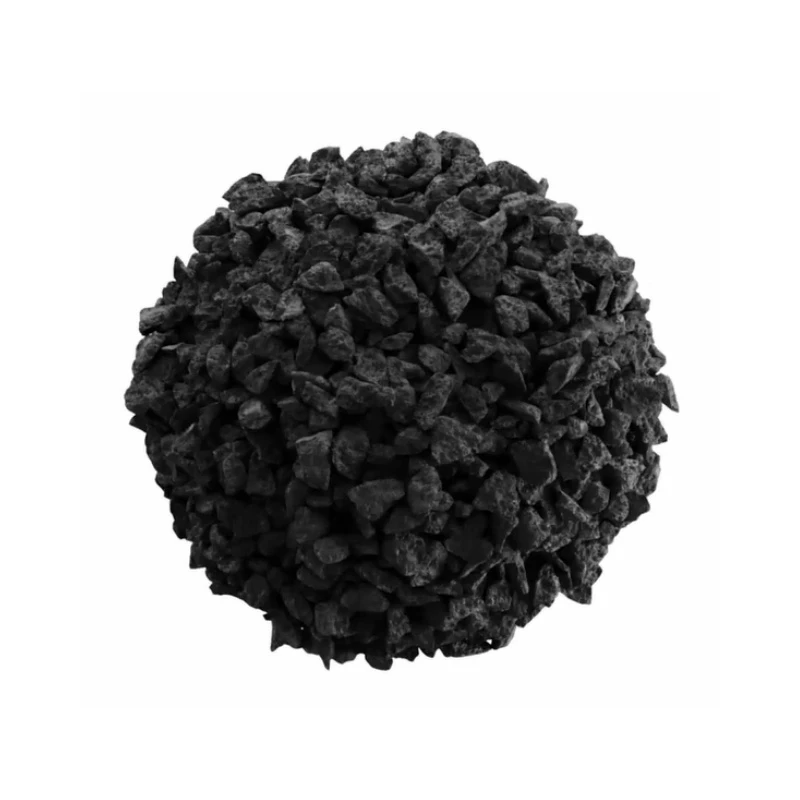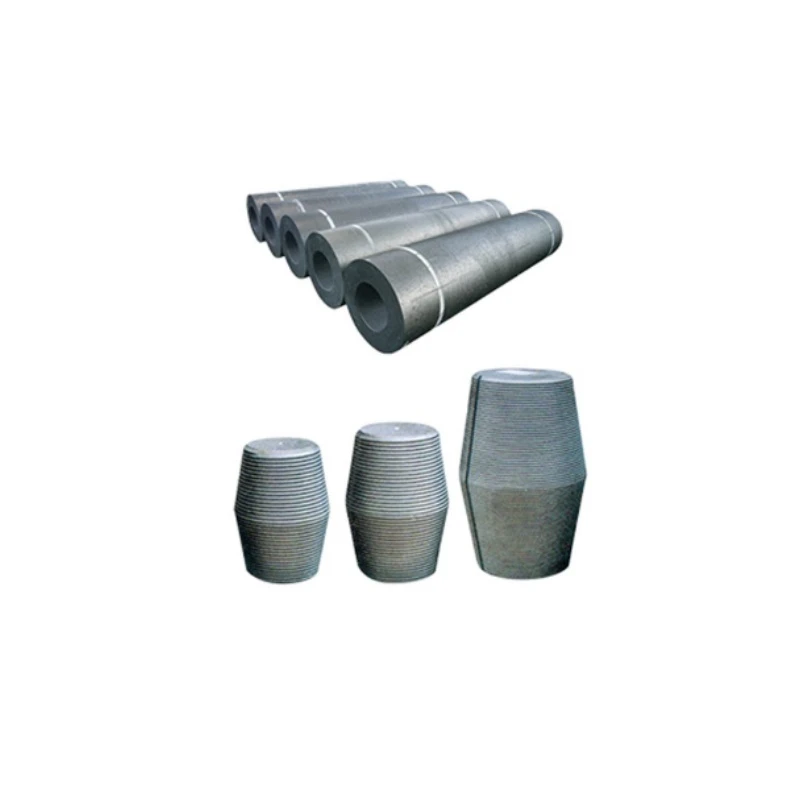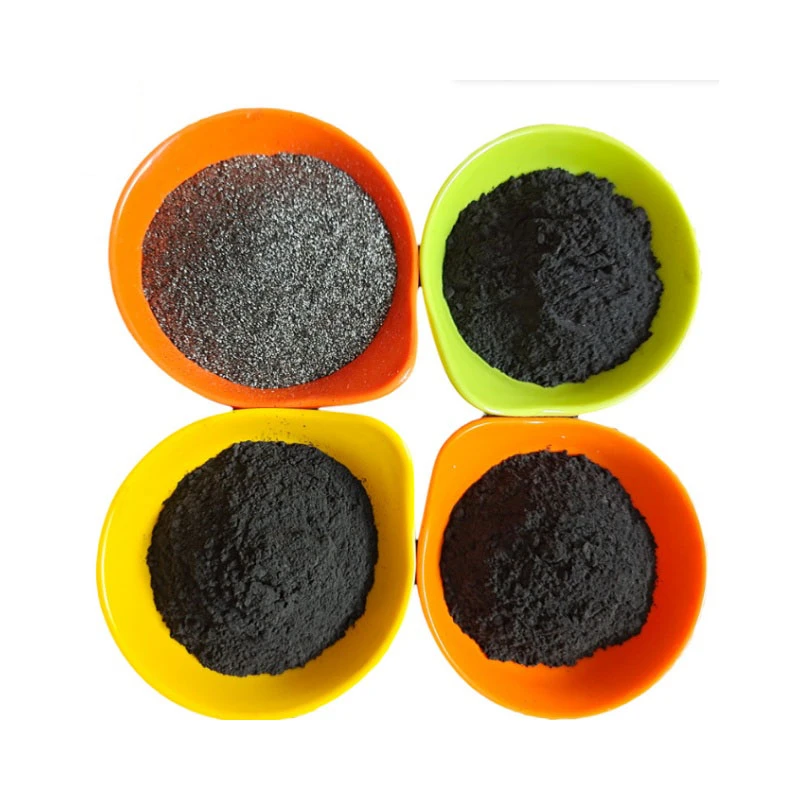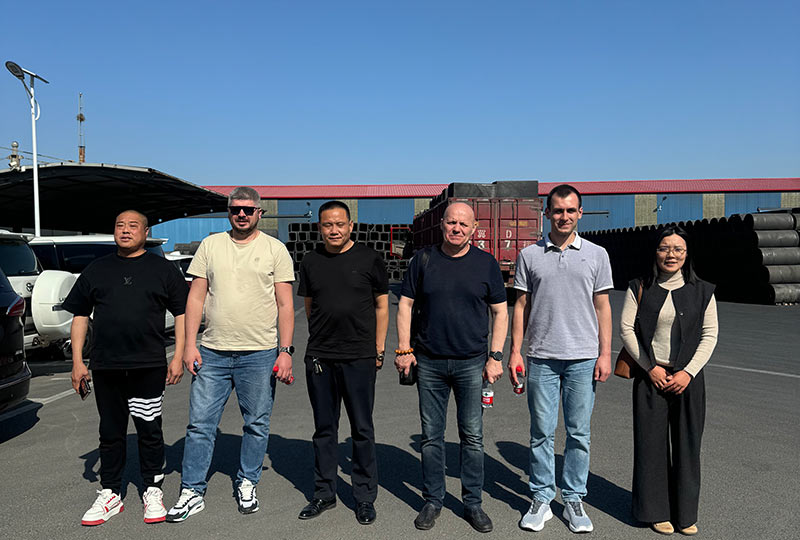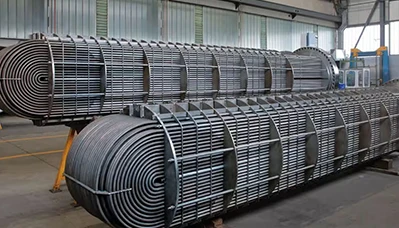- Englist


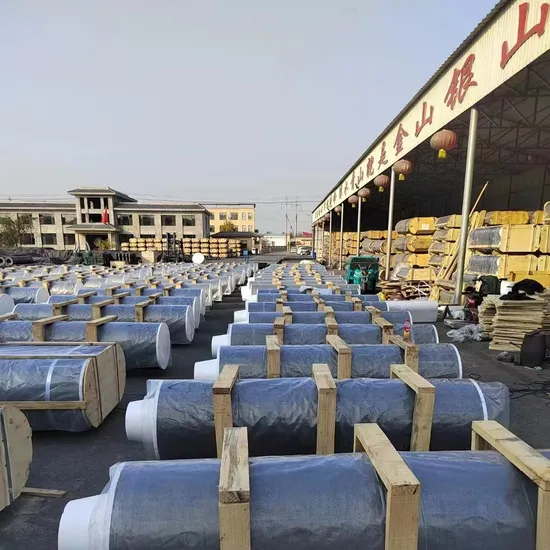
In the relentless pursuit of efficiency and sustainability within the steel industry, the role of graphite electrodes stands paramount. These critical components are the backbone of Electric Arc Furnaces (EAFs) and Ladle Furnaces (LFs), providing the intense heat necessary for melting steel scrap and refining molten metal. While RP graphite electrode (Regular Power) has historically served as a foundational technology, the industry's evolution demands increasingly advanced solutions, leading to the prominence of HP (High Power) and UHP (Ultra High Power) graphite electrodes. This comprehensive guide delves into the nuances of graphite electrodes, focusing on the latest advancements and how products like the Supply Steel Industry Using Graphite Electrode UHP450 UHP500mm are shaping the future of metallurgy.

Global Trends in Graphite Electrode Technology and Steel Production
The global steel industry is undergoing a significant transformation, driven by an increasing emphasis on sustainability, circular economy principles, and cost-efficiency. Electric Arc Furnaces (EAFs), which predominantly use steel scrap as raw material, are gaining traction over traditional Blast Furnace-Basic Oxygen Furnace (BF-BOF) routes due to their lower carbon footprint and greater operational flexibility. This shift directly translates into a surging demand for high-performance graphite electrodes.
Industry reports consistently highlight that the EAF steelmaking route is projected to grow significantly. For instance, the global EAF steel production capacity is expected to expand by over 30% by 2030, with a corresponding increase in demand for graphite electrodes. This growth fuels innovation in electrode manufacturing, pushing for higher current densities, improved thermal shock resistance, and reduced consumption rates. While RP graphite electrode remains relevant for certain applications, the trend is unequivocally towards HP and UHP grades to meet the rigorous demands of modern, high-output EAFs, particularly for specialty steels and larger furnace operations that utilize large diameter electrodes such as hp 600mm graphite electrode.
Product Spotlight: Supply Steel Industry Using Graphite Electrode UHP450 UHP500mm
Our product, the Supply Steel Industry Using Graphite Electrode UHP450 UHP500mm, represents the pinnacle of electrode technology. Designed for ultra-high power applications, these electrodes are engineered to withstand extreme temperatures and electrical loads common in demanding steelmaking environments. Their superior conductivity and mechanical strength minimize electrode consumption, leading to substantial operational savings for steel producers.
While the principles behind a RP graphite electrode are foundational, UHP electrodes like our UHP450 UHP500mm offer enhanced performance through meticulously controlled raw material selection and advanced manufacturing processes. The product's dimensions, UHP450mm and UHP500mm, denote its diameter, catering to specific furnace requirements where high-efficiency energy transfer is critical.
Key Technical Parameters of Graphite Electrodes (UHP Type)
Understanding the technical specifications is crucial for optimal electrode selection. Here’s a table outlining typical parameters for UHP graphite electrodes, demonstrating their superior characteristics compared to standard RP graphite electrode types. Note that HP graphite electrodes, such as hp 100mm graphite electrode, offer an intermediate performance level between RP and UHP, often used in medium-power furnaces.
| Parameter | Unit | UHP Electrode (Typical Range) | RP Electrode (Typical Range) | Significance |
|---|---|---|---|---|
| Bulk Density | g/cm³ | 1.70 - 1.76 | 1.55 - 1.65 | Higher density implies more graphite material per volume, leading to better conductivity and mechanical strength. Critical for resisting thermal shock and current flow. |
| Resistivity (Max) | µΩ·m | 5.0 - 5.8 | 6.5 - 8.0 | Lower resistivity means less electrical resistance, translating to more efficient current transfer and reduced energy loss (I²R loss). Essential for high-power applications. |
| Flexural Strength | MPa | 11.0 - 14.0 | 8.0 - 10.0 | Indicates the material's resistance to bending or breaking. Higher strength is vital for handling mechanical stresses during furnace operation and electrode handling. |
| Compressive Strength | MPa | 25.0 - 35.0 | 18.0 - 22.0 | Measures resistance to crushing. Important for load-bearing during electrode column stacking. |
| Ash Content (Max) | % | 0.03 - 0.05 | 0.1 - 0.3 | Lower ash content signifies higher purity, which reduces impurities introduced into the steel melt and improves electrical performance. |
| Thermal Expansion Coefficient (CTE) | 10⁻⁶/°C | 0.8 - 1.2 | 1.5 - 2.5 | Lower CTE indicates less expansion and contraction with temperature changes, reducing internal stresses and improving thermal shock resistance. |
| Modulus of Elasticity | GPa | 9.0 - 12.0 | 7.0 - 9.0 | Measures material stiffness. Higher modulus implies greater rigidity and resistance to deformation under stress. |
| Machined Surface Quality | (Visual/Roughness) | Smooth, precise, no cracks | Good | Crucial for secure nipple connection and minimal electrical contact resistance, ensuring efficient power delivery. |

Understanding the Manufacturing Process of Graphite Electrodes
The production of high-quality graphite electrodes, whether RP graphite electrode or UHP, is an intricate process demanding precision, advanced technology, and rigorous quality control. It involves multiple stages, each critical to the final product's performance. Our UHP450 UHP500mm electrodes undergo an enhanced version of this process, utilizing premium raw materials and specialized heat treatments.
Detailed Process Flow: From Raw Material to Finished Electrode
-
1. Raw Material Preparation (Calcining & Crushing)
Description: The primary raw materials are high-quality needle coke (for UHP and HP electrodes, offering excellent electrical conductivity and low thermal expansion) and petroleum coke (for RP electrodes), along with coal tar pitch as a binder. These cokes are first calcined (heat-treated at 1200-1350°C) to remove volatile matter and improve crystalline structure and electrical conductivity. Post-calcination, the coke is crushed and screened into various particle sizes.
Key Node: Calcination Furnace, Crushing & Screening Mills. Particle size distribution is crucial here for the final density and homogeneity.
-
2. Mixing and Kneading
Description: The precisely weighed calcined coke particles of different sizes are mixed with a specified amount of coal tar pitch binder in a heated mixer. The mixture is then kneaded to ensure uniform dispersion of the binder and optimal workability. The ratio of raw materials directly influences the final electrode properties, especially for hp graphite products.
Key Node: Hot Mixer/Kneader. Temperature and mixing time are critical for proper binder distribution.
-
3. Forming (Extrusion or Molding)
Description: The plasticized mix is extruded through a die using a high-pressure extrusion press to form cylindrical electrode blanks of specific diameters. For very large electrodes, molding might be used. This step dictates the initial shape and internal structure.
Key Node: Extrusion Press. Controlled pressure and die design ensure consistent diameter and density.
-
4. Baking (Carbonization)
Description: The extruded green electrodes are loaded into baking furnaces and slowly heated over several weeks to temperatures around 800-1000°C. During baking, the pitch binder carbonizes, forming a carbon bond between the coke particles, giving the electrode mechanical strength and electrical conductivity. Volatile by-products are released.
Key Node: Ring Furnace or Tunnel Kiln. Precise temperature control and slow heating/cooling cycles prevent cracking.
-
5. Impregnation (Optional, but critical for HP/UHP)
Description: Baked electrodes for HP and UHP applications (like UHP450 UHP500mm) typically undergo impregnation. They are vacuum-impregnated with a liquid pitch or synthetic resin, which fills pores and increases density. This step can be repeated (re-baking after impregnation) to further enhance properties.
Key Node: Impregnation Autoclave. Vacuum application ensures deep penetration of impregnant.
-
6. Graphitization
Description: This is the most crucial step, transforming amorphous carbon into crystalline graphite. Electrodes are heated in a graphitization furnace to extremely high temperatures (2500-3000°C) using the Acheson process or a Castner process. At these temperatures, carbon atoms rearrange into a highly ordered graphite crystalline structure, dramatically increasing electrical conductivity, thermal conductivity, and resistance to thermal shock. This is where the distinction between rp graphite electrode (lower graphitization temperature/duration) and UHP electrodes becomes most pronounced.
Key Node: Graphitization Furnace (e.g., Acheson graphitization furnace). Precise temperature and time control are vital for crystalline quality.
-
7. Machining and Finishing
Description: The graphitized electrodes are machined to precise dimensions, including the creation of pin and socket ends for connection (usually using CNC machining for high precision). Surface quality, thread accuracy (often following international standards like NEMA, ISO 6378), and dimensional tolerances are meticulously checked. Finally, they are often coated (e.g., anti-oxidation coating) and packaged.
Key Node: CNC Machining Centers, Inspection Gauges. Adherence to ISO, ANSI, and NEMA standards ensures interoperability and performance.
Throughout this process, stringent quality control measures are implemented, including material analysis, density checks, resistivity measurements, strength tests, and visual inspections, ensuring every Supply Steel Industry Using Graphite Electrode UHP450 UHP500mm meets the highest performance standards.

Application Scenarios and Technical Advantages
Our UHP graphite electrodes are primarily designed for the demanding environment of the steel industry, specifically for Electric Arc Furnaces (EAFs) and Ladle Furnaces (LFs). These furnaces operate under extreme conditions, requiring electrodes that can efficiently transfer high currents and withstand severe thermal and mechanical stresses.
Primary Application: Steel Metallurgy (EAF & LF)
- Electric Arc Furnaces (EAFs): UHP electrodes are critical for melting scrap steel and direct reduced iron (DRI) in EAFs. Their low resistivity ensures minimal energy loss and efficient melting, leading to shorter tap-to-tap times and higher productivity. The robust mechanical properties allow them to withstand dynamic forces during scrap charging and arc operation.
- Ladle Furnaces (LFs): In LFs, electrodes are used for refining molten steel, adjusting its temperature, and homogenizing the melt. UHP electrodes contribute to precise temperature control and efficient alloy additions, crucial for producing high-quality specialty steels.
Technical Advantages of Our UHP Electrodes
Enhanced Performance over RP Graphite Electrode:
- Superior Electrical Conductivity: Ultra-low electrical resistivity minimizes power loss and maximizes energy transfer to the arc, leading to reduced electricity consumption and faster melt times. This directly translates to significant operational cost savings for steel mills.
- Exceptional Thermal Shock Resistance: Engineered to endure rapid and extreme temperature fluctuations, our UHP electrodes resist cracking and spalling, ensuring longer service life and fewer electrode breakages. This is a crucial advantage in the intermittent operation of EAFs.
- Low Electrode Consumption Rate: Through optimized material composition (high-grade needle coke) and advanced graphitization, our electrodes exhibit superior oxidation resistance and mechanical integrity, leading to reduced overall electrode consumption per ton of steel produced. This lowers production costs and environmental impact.
- High Mechanical Strength: With high flexural and compressive strength, these electrodes can withstand the significant mechanical stresses during handling, column assembly, and furnace operation, including impacts from scrap charging.
- Precise Machining: Our electrodes feature highly accurate threaded connections, ensuring a secure and low-resistance joint, which is vital for maintaining arc stability and preventing costly electrode joint failures.
Manufacturer Comparison and Choosing Your Partner
Selecting the right graphite electrode supplier is as critical as choosing the electrode itself. The market offers a range of manufacturers, from those specializing in rp graphite electrode to industry leaders in UHP technology. When comparing, consider the following:
- Raw Material Sourcing: Top-tier manufacturers utilize premium-grade needle coke and petroleum coke, which are foundational for UHP performance. Our commitment to sourcing the finest raw materials ensures the purity and consistency of our electrodes.
- Manufacturing Expertise: Look for manufacturers with state-of-the-art facilities, advanced quality control systems, and a deep understanding of the complex graphitization process. Our decades of experience and continuous investment in technology set us apart.
- Certifications & Standards: Adherence to international standards like ISO 9001 (Quality Management), ISO 14001 (Environmental Management), and OHSAS 18001 (Occupational Health and Safety) demonstrates a commitment to quality and responsible production. Our products conform to global industry specifications such as NEMA CG 1.
- R&D and Innovation: Leading manufacturers continuously invest in research and development to improve electrode performance, reduce consumption, and develop new solutions. This commitment to innovation is what drives the advancements from rp graphite electrode to UHP.
- Technical Support & After-Sales Service: A reliable partner provides expert technical assistance, on-site support, and troubleshooting to optimize electrode usage and maximize furnace efficiency.

Customization Solutions and Tailored Offerings
Recognizing that each steel mill has unique operational parameters, furnace designs, and production goals, we offer comprehensive customization solutions for our Supply Steel Industry Using Graphite Electrode UHP450 UHP500mm.
- Diameter and Length Variations: While UHP450mm and UHP500mm are standard, we can discuss requirements for other specific diameters, including larger ones like hp 600mm graphite electrode, and various lengths to perfectly match your EAF or LF specifications.
- Nipple Joint Design: We offer a range of nipple designs (e.g., 3TPI, 4TPI, Pin-to-Pin) and ensure precise machining to guarantee optimal electrical and mechanical connection, minimizing electrode breakages at the joint.
- Anti-Oxidation Coatings: For certain demanding environments, we can apply specialized anti-oxidation coatings to the electrode surface, further reducing consumption by inhibiting graphite oxidation at high temperatures.
- Logistical and Packaging Solutions: Tailored packaging (e.g., wooden crates, steel cages) and shipping methods (sea freight, rail) are available to ensure safe and timely delivery, minimizing transit damage.
- Performance Optimization Consultation: Our technical team works closely with clients to analyze their furnace operations, identify consumption patterns, and recommend optimal electrode usage strategies, including power profiles and operational best practices.
Real-World Application Cases and Client Successes
Our UHP electrodes have consistently demonstrated their value in diverse steelmaking operations worldwide, proving their superior performance compared to traditional rp graphite electrode types.
"A major European steel producer, struggling with high electrode consumption rates and frequent breakages in their 100-ton EAF, transitioned to our UHP500mm electrodes. Within six months, they reported a 12% reduction in overall electrode consumption per ton of liquid steel and a 20% decrease in unexpected downtime due to electrode incidents. This resulted in significant cost savings and improved operational predictability."
"In North America, a client specializing in high-alloy steel production in a smaller, high-power LF (equipped for hp graphite applications) adopted our UHP450mm electrodes. Their feedback indicated a noticeable improvement in arc stability, which allowed for more consistent temperature control during refining, leading to enhanced steel quality and reduced re-work."
These cases exemplify how our commitment to quality, advanced manufacturing, and strong technical support translates into tangible benefits for our partners, solidifying our reputation as a trusted supplier in the global graphite electrode market.

Ensuring Trustworthiness: Certifications, Support, and Guarantees
Our commitment to excellence is underpinned by a robust framework of quality assurance, industry certifications, and unparalleled customer support, fostering deep trust with our global clientele.
Industry Certifications and Quality Assurance
- ✔️ ISO 9001:2015 Certified: Demonstrates our adherence to a stringent Quality Management System, ensuring consistent product quality and customer satisfaction.
- ✔️ ISO 14001:2015 Certified: Highlights our commitment to environmental responsibility, minimizing our operational footprint.
- ✔️ OHSAS 18001 (or ISO 45001) Certified: Ensures a robust Occupational Health and Safety Management System for a safe working environment.
- ✔️ Adherence to NEMA CG 1 Standard: Our electrodes meet or exceed the National Electrical Manufacturers Association (NEMA) standards for carbon and graphite electrodes, guaranteeing compatibility and performance.
- ✔️ In-house R&D and Testing Lab: Equipped with advanced testing equipment, our lab performs rigorous material characterization and performance tests (resistivity, strength, thermal expansion) on every batch, exceeding even rp graphite electrode standards.
Transparent Deliverables and Support
- Delivery Cycle: Our standard delivery cycle typically ranges from 4-8 weeks, depending on order volume, customization requirements, and current production schedules. Urgent orders can be expedited through special arrangements.
- Quality Assurance and Warranty: We offer a comprehensive quality assurance program. Each electrode comes with a material test certificate. Our products are guaranteed against manufacturing defects. Specific warranty terms will be provided with each contract, covering performance parameters and material integrity.
- Customer Support: Our dedicated customer support team and technical experts are available 24/7 to address inquiries, provide technical guidance, and offer on-site support for installation, usage optimization, and troubleshooting. We believe in building long-term partnerships.
- Global Service Network: With sales and service representatives across key regions, we ensure prompt and effective support, no matter where your operations are located.
Frequently Asked Questions (FAQ) about Graphite Electrodes
Q1: What is the primary difference between RP graphite electrode, HP, and UHP electrodes?
A1: The main difference lies in their power handling capacity, electrical resistivity, and mechanical strength. RP (Regular Power) electrodes are suitable for furnaces with lower current densities, offering higher resistivity and lower strength. HP (High Power) electrodes (e.g., hp 100mm graphite electrode, hp 600mm graphite electrode) are designed for higher current densities, with lower resistivity and improved strength due to better raw materials and processing. UHP (Ultra High Power) electrodes, like our UHP450 UHP500mm, are the most advanced, engineered for extremely high current loads, offering the lowest resistivity, highest strength, and superior thermal shock resistance, leading to maximum efficiency and productivity in modern EAFs.
Q2: What raw materials are used to make graphite electrodes?
A2: The primary raw materials are calcined petroleum coke and/or calcined needle coke, blended with coal tar pitch as a binder. For UHP electrodes, high-purity needle coke is predominantly used due to its excellent crystalline structure and low thermal expansion, which contributes to the electrode's superior electrical and thermal properties.
Q3: What is graphitization, and why is it important?
A3: Graphitization is a high-temperature heat treatment process (2500-3000°C) that transforms the amorphous carbon structure of the baked electrode into a highly ordered crystalline graphite structure. This process dramatically improves the electrode's electrical conductivity, thermal conductivity, and resistance to thermal shock, making it suitable for EAF operations. It is the defining step for the performance of hp graphite and UHP electrodes.
Q4: How does electrode consumption impact steel production costs?
A4: Electrode consumption is a significant operational cost in EAF steelmaking, often ranking second only to electricity. Lowering electrode consumption directly translates to substantial cost savings per ton of steel produced, improves furnace uptime, and reduces environmental impact. UHP electrodes are designed specifically to minimize this consumption.
Q5: What international standards do your electrodes conform to?
A5: Our electrodes are manufactured to meet or exceed various international standards, including NEMA CG 1 (Carbon and Graphite Electrodes for Electric Arc Furnaces), ISO 6378-2 (Graphite materials for electrodes and other applications), and often specific customer requirements. This ensures global compatibility and reliable performance.
Q6: What is the typical service life of a UHP electrode?
A6: The service life of a UHP electrode is not measured in a fixed time but rather in tons of steel produced per ton of electrode consumed (consumption rate). Typical UHP consumption rates can range from 1.0 to 1.8 kg/ton of steel, depending on furnace size, operating practices, and steel grade. Our UHP electrodes are designed for optimal longevity by maximizing performance and minimizing consumption.
Q7: Can your electrodes be used in applications other than steelmaking?
A7: While our Supply Steel Industry Using Graphite Electrode UHP450 UHP500mm is optimized for EAF and LF steelmaking, graphite electrodes, in general, are used in various other high-temperature applications, including silicon metal production, ferroalloy production, and other metallurgical processes where high electrical conductivity and thermal stability are required. For specific non-steel applications, tailored graphite solutions might be more suitable.
Conclusion: The Future is High-Performance Graphite
The evolution of steelmaking, particularly the ascendancy of the EAF route, underscores the critical importance of advanced graphite electrode technology. From the foundational RP graphite electrode to the cutting-edge UHP solutions, the trajectory is clear: higher power, greater efficiency, and reduced environmental impact. Our Supply Steel Industry Using Graphite Electrode UHP450 UHP500mm stands as a testament to this progress, offering steel producers a reliable, high-performance solution that directly contributes to improved productivity and profitability. By choosing our UHP electrodes, you invest not just in a product, but in a partnership dedicated to metallurgical excellence.
For further insights into the global graphite electrode market and steel industry trends, consider exploring:
- World Steel Association: https://www.worldsteel.org
- Journal of Iron and Steel Research International: https://www.sciencedirect.com/journal/iron-and-steel-research-international
- The Minerals, Metals & Materials Society (TMS) Publications: https://www.tms.org/Publications





 Pervious
Pervious
 Next
Next
